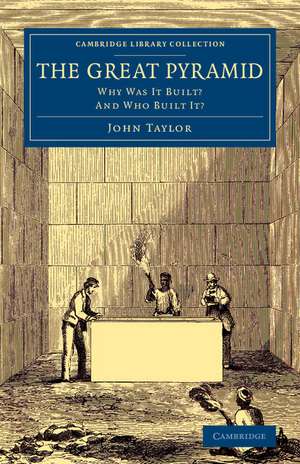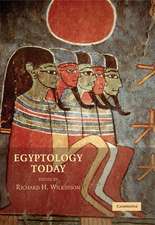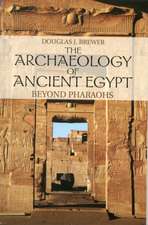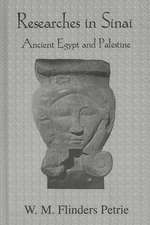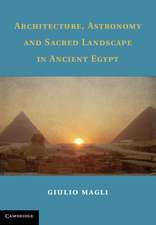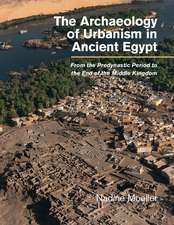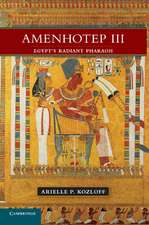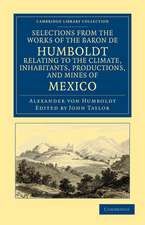The Great Pyramid: Why Was It Built? And Who Built It?: Cambridge Library Collection - Egyptology
Autor John Tayloren Limba Engleză Paperback – 20 aug 2014
Din seria Cambridge Library Collection - Egyptology
- 19%
 Preț: 600.23 lei
Preț: 600.23 lei -
 Preț: 427.95 lei
Preț: 427.95 lei -
 Preț: 421.04 lei
Preț: 421.04 lei -
 Preț: 422.01 lei
Preț: 422.01 lei -
 Preț: 281.48 lei
Preț: 281.48 lei -
 Preț: 254.32 lei
Preț: 254.32 lei -
 Preț: 280.94 lei
Preț: 280.94 lei -
 Preț: 268.08 lei
Preț: 268.08 lei -
 Preț: 447.24 lei
Preț: 447.24 lei -
 Preț: 339.02 lei
Preț: 339.02 lei -
 Preț: 263.45 lei
Preț: 263.45 lei -
 Preț: 378.69 lei
Preț: 378.69 lei -
 Preț: 377.22 lei
Preț: 377.22 lei -
 Preț: 329.02 lei
Preț: 329.02 lei -
 Preț: 521.79 lei
Preț: 521.79 lei -
 Preț: 285.56 lei
Preț: 285.56 lei -
 Preț: 293.88 lei
Preț: 293.88 lei -
 Preț: 381.75 lei
Preț: 381.75 lei -
 Preț: 377.82 lei
Preț: 377.82 lei -
 Preț: 421.42 lei
Preț: 421.42 lei -
 Preț: 279.95 lei
Preț: 279.95 lei -
 Preț: 237.63 lei
Preț: 237.63 lei -
 Preț: 274.46 lei
Preț: 274.46 lei -
 Preț: 484.34 lei
Preț: 484.34 lei -
 Preț: 239.36 lei
Preț: 239.36 lei -
 Preț: 224.36 lei
Preț: 224.36 lei -
 Preț: 288.11 lei
Preț: 288.11 lei -
 Preț: 466.75 lei
Preț: 466.75 lei -
 Preț: 222.41 lei
Preț: 222.41 lei -
 Preț: 254.14 lei
Preț: 254.14 lei -
 Preț: 368.87 lei
Preț: 368.87 lei -
 Preț: 371.36 lei
Preț: 371.36 lei -
 Preț: 284.97 lei
Preț: 284.97 lei -
 Preț: 333.25 lei
Preț: 333.25 lei -
 Preț: 478.49 lei
Preț: 478.49 lei - 19%
 Preț: 546.89 lei
Preț: 546.89 lei -
 Preț: 376.19 lei
Preț: 376.19 lei -
 Preț: 263.83 lei
Preț: 263.83 lei -
 Preț: 337.07 lei
Preț: 337.07 lei -
 Preț: 423.54 lei
Preț: 423.54 lei -
 Preț: 466.75 lei
Preț: 466.75 lei -
 Preț: 255.09 lei
Preț: 255.09 lei -
 Preț: 431.42 lei
Preț: 431.42 lei -
 Preț: 386.64 lei
Preț: 386.64 lei -
 Preț: 469.47 lei
Preț: 469.47 lei -
 Preț: 241.27 lei
Preț: 241.27 lei -
 Preț: 332.48 lei
Preț: 332.48 lei
Preț: 371.08 lei
Nou
Puncte Express: 557
Preț estimativ în valută:
71.03€ • 77.18$ • 59.70£
71.03€ • 77.18$ • 59.70£
Carte tipărită la comandă
Livrare economică 21 aprilie-05 mai
Preluare comenzi: 021 569.72.76
Specificații
ISBN-13: 9781108075787
ISBN-10: 1108075789
Pagini: 340
Ilustrații: 2 b/w illus.
Dimensiuni: 140 x 216 x 19 mm
Greutate: 0.36 kg
Editura: Cambridge University Press
Colecția Cambridge University Press
Seria Cambridge Library Collection - Egyptology
Locul publicării:Cambridge, United Kingdom
ISBN-10: 1108075789
Pagini: 340
Ilustrații: 2 b/w illus.
Dimensiuni: 140 x 216 x 19 mm
Greutate: 0.36 kg
Editura: Cambridge University Press
Colecția Cambridge University Press
Seria Cambridge Library Collection - Egyptology
Locul publicării:Cambridge, United Kingdom
Cuprins
Part I. Exterior of the Great Pyramid: 1. The pyramids of Gizeh; 2. Earliest measures of the base of the pyramid; 3. Various heights ascribed to the great pyramid; 4. Various estimates of the Greek foot; 5. The measure of the great pyramid according to Herodotus; 6. The cubit of Karnak; 7. The royal or Philetaerian foot; 8. The sacred cubit of the Jews; 9. Degrees, minutes, and seconds in the table of constants; 10. Diameter of the earth; Part II. Interior of the Great Pyramid: 11. General description of the interior of the great pyramid; 12. The king's chamber; 13. The pyramid coffer the standard of all measures; 14. The pyramid coffer the measure of the laver; 15. The pyramid coffer the standard of Grecian measures; 16. The pyramid coffer the standard of English measures; 17. English weights derived from English measures of capacity; 18. Grecian weights derived from Grecian measures of capacity; 19. English and French systems of metrology compared; 20. Etymological illustrations; Part III. The Founders of the Great Pyramid: 21. Introductory remarks; 22. The founders not the race of Ham; 23. These shepherds were an abomination to the Egyptians; 24. The founders of the great pyramid were the race of Shem; 25. Noah the probable originator of the work; 26. The earth divided in the days of Peleg; 27. The canal of Joseph; 28. The builders of the tower of Babel were of the race of Ham; 29. The great pyramid alluded to in the Book of Job; 30. The great pyramid alluded to in the Book of Psalms; 31. Origin of the Arabian language; 32. Arabian numerals preceded alphabetic writing; Appendix.
Descriere
In this 1859 work, John Taylor revealed the 'pyramid inch', though this alleged sacred unit of measurement was later debunked.
